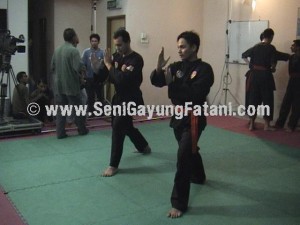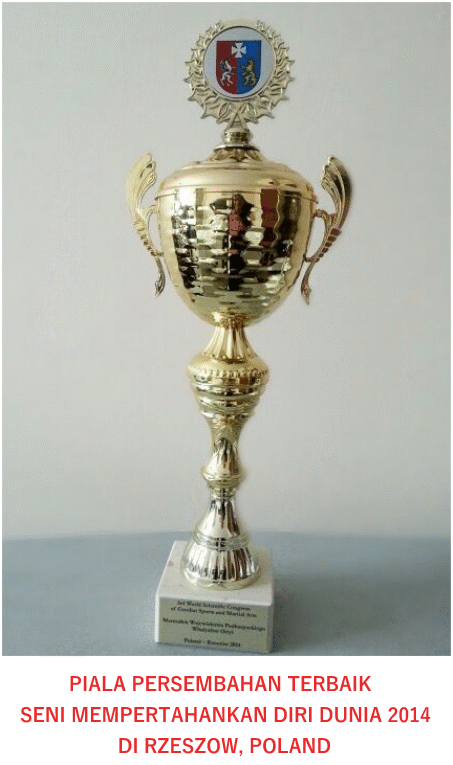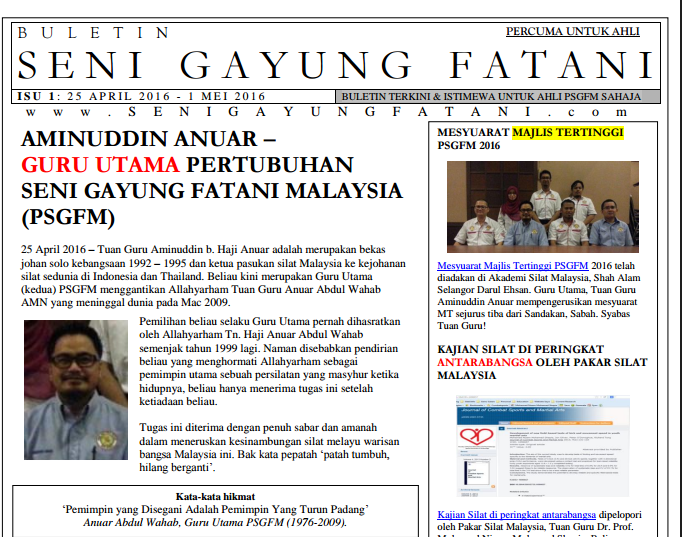In order to determine the silat exponent performance and level in self defense moves, Bunga Silat played an important role to determine how far the students develop in martial art training. In silat syllabus there are seven Bunga. This specifically means that for every level in silat syllabus there will be one bunga.
Bunga means the basis of silat movements which consists of seven langkah (steps), seven kuda-kuda (stances) and seven limbai (hand positions). The Bunga will teach the exponent how to master the defensive and striking position in silat movements. There are some silat vocabularies that one needs to know to understand the whole concept of bunga.
In the first part is Limbai. In limbai there are three important parts. There are Ayun, Limbai and Lenggang. Ayun means a movement of the hands while in stop position. Limbai is a hand positions while in stop position and Lenggang while dancing or moving in silat movements.
There are seven limbai in Bunga. There are Rencung (right hand in front of the left chest and the left hand on the stomach), Kapit (right hand align with right leg while holding a fist or punch and the left hand in front of the nose), Empang (left hand on the left quadricep and the right hand holding a fist straight on theright side of the shoulder), Sangga (left hand in front of the chest and the right hand rise above the head with holding a fist just like to block any strike from above), Lunjur (left hand in front of the right chest and the right hand straight to the side at the shoulder level position), Kacip (both hand are in the rencung or in ‘X’ position in front of the chest) and Juak (left hand on the stomach and the right hand far above the left ear position). Every limbai has their own meaning and functions in the self defense moves.
The second part in Bunga Silat syllabus is Langkah. Langkah means the legs movements while walking or running. There are seven langkah which are Serung (left leg in front of the right leg with 145 degrees from right angle), Tunjang (the right leg in front of left leg, body weight on right leg), Terus (forward), Undur (backward), Ereng (vertical but on the sideway position), Silang (crossing) and Samping (sideward).
The third part in Bunga is Kuda-kuda. Kuda-kuda means the situation where both feet are not moving on the floor. There are seven kuda-kuda which are Serung, Teleng, Terus, Kilas (left leg behind the right leg with body weight on it), Ereng, Silang and Samping. Similar with limbai, the langkah and kuda-kuda have their own philosophy and secrets techniques in martial arts.
Bunga silat from the real base consists of seven Langkah which are serung, tunjang, terus, under, ereng, silat and samping. These langkah will be used in every level and also as the foundation to next level syllabus. Usually Bunga silat will be practice while starting the silat class, beginning of silat performance or competition. The slow motion movements of bunga, tidies and harmony will develop the intrinsic manners for every silat exponent such as discipline, respect, patience, peace, caution, proper and elegant. The self defense moves in silat will be perfect once the exponent mastering this fundamental skill.





Leave a Reply
You must be logged in to post a comment.